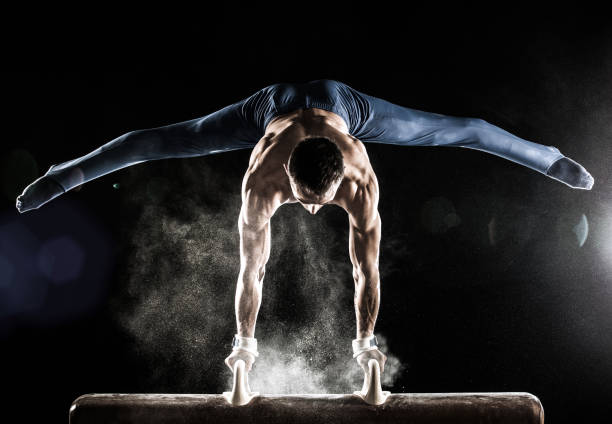Defying Gravity: The Art and Science of Gymnastics
Gymnastics, a sport that embodies grace, precision, and strength, has a rich history that dates back to ancient civilization. Today, it continues to captivate audiences worldwide with its blend of beauty and athleticism. This article delves into the world of gymnastics, exploring its origins, evolution, and current trends, while shedding light on its training methodologies and the physical and psychological demands faced by athletes.

Gymnastics, with its breathtaking flips and twists, is a spectacle that leaves spectators in awe. It’s a sport that demands a unique combination of strength, flexibility, balance, and control. But what does it take to master this sport, and how has it evolved over the years? Let’s dive into this world where athletes defy gravity and push the limits of human capability.
From Ancient Training to Modern Sport
The roots of gymnastics can be traced back to ancient Greece, where it was practiced as a form of physical training for men. It was also a key component of military training, with participants practicing tumbling, mounting and dismounting horses, and discus throwing. The modern form of gymnastics, as we know it today, emerged in the late 18th century, thanks to Johann Christoph Friedrich GutsMuths and Friedrich Ludwig Jahn of Germany.
The Evolution of Gymnastics
Gymnastics has undergone significant changes since its inception. From being a male-dominated sport to being inclusive of both genders, the sport has evolved to include artistic, rhythmic, trampoline, aerobic, and acrobatic gymnastics. The scoring system, too, has seen revisions, most notably moving away from the perfect 10 scores to a more complex system that evaluates difficulty and execution separately.
Training Methodologies in Gymnastics
Training for gymnastics is rigorous and demands a high level of commitment. It involves a combination of strength training, flexibility exercises, and specialized drills to improve skills and performance. The balance beam, uneven bars, and pommel horse each require unique training methods that enhance specific muscles and skills. However, despite the strenuous nature of the training, it is essential to ensure it is age-appropriate and safe to prevent injuries.
The Psychological Aspect of Gymnastics
Gymnastics is not just a physical sport; it has a significant psychological component. Athletes need to manage stress, maintain focus, and build confidence to perform at their best. The mental toughness required is just as important, if not more, than the physical strength required.
Current Trends and Future of Gymnastics
The world of gymnastics is continually evolving. Moves are becoming more complex, and the standards are rising. Today, we see an increased emphasis on athlete safety and mental health, a trend that will likely continue. In a sport where boundaries are always being pushed, the future holds a promise of more spectacular performances, innovative techniques, and a continued celebration of the human body’s capabilities.
In conclusion, gymnastics is a sport that combines strength, grace, precision, and a great deal of mental toughness. Its evolution and the ongoing developments make it a dynamic and fascinating discipline to follow. As we watch athletes push their limits and defy gravity, we are reminded of the incredible capabilities of the human body and spirit.




